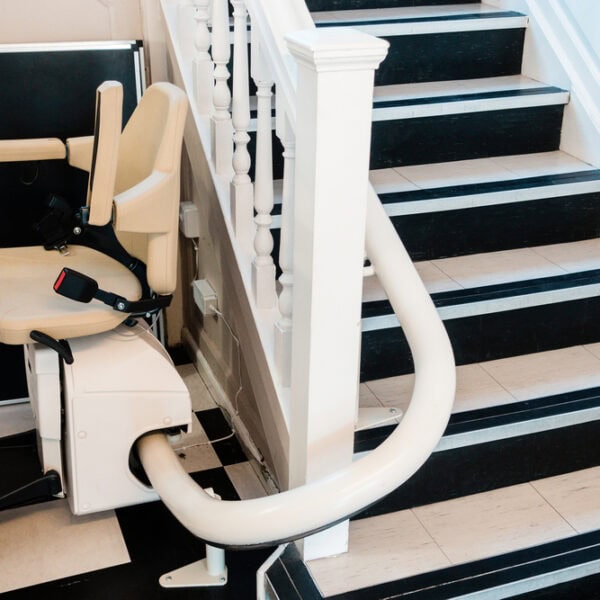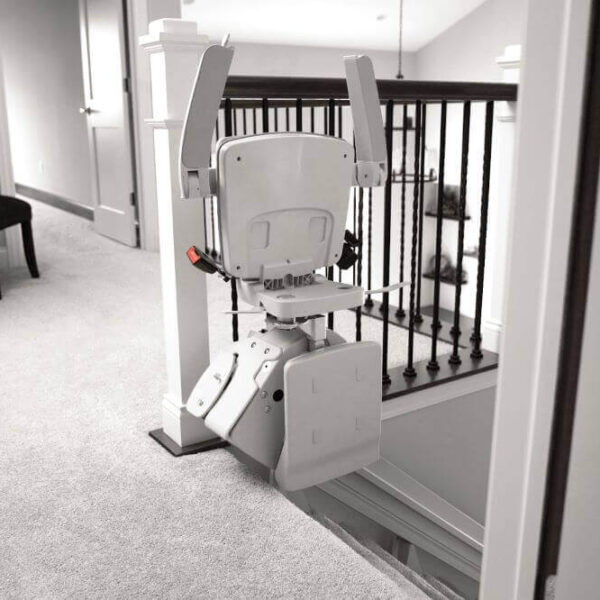
Simple Steps: Choosing the Right Stair Seat Lift for Your Needs
March 10, 2025
Quick and Easy: Using a Stair Lift for Enhanced Mobility and Safety
March 24, 2025Just envision the ease of a home elevator, enhancing accessibility and comfort in your living space. Proper planning allows you to navigate options and make informed decisions tailored to your needs. This guide will equip you with step-by-step strategies to ensure a seamless installation experience, from choosing the right design to understanding building regulations. Follow along to mitigate potential pitfalls and embrace the benefits of modern living with your new home elevator.
Key Takeaways:
- Assess your home layout and determine the best location for the elevator to ensure optimal accessibility.
- Consult with professionals to understand the various types of elevators available and choose one that fits your needs and budget.
- Plan for any necessary structural modifications and build a timeline that accounts for installation and potential disruptions.
Understanding Home Elevators
Understanding home elevators is imperative for homeowners contemplating accessibility or convenience. These installations can significantly improve your home’s function while also adding value. Home elevators can be ideal for individuals with mobility challenges or those looking to enhance their living space and convenience. By familiarizing yourself with various elevator technologies, you can make informed decisions about your installation project.
Types of Home Elevators
For your renovation, exploring the different types of home elevators is helpful. Options vary based on size, design, and functionality:
- Hydraulic elevators
- Pneumatic elevators
- Traction elevators
- Platform lifts
- Mini elevators
Knowing the various types can assist you in selecting the most suitable option for your unique requirements.
| Type | Description |
| Hydraulic | Uses a fluid-driven piston for movement |
| Pneumatic | Utilizes air pressure to move the cab |
| Traction | Operates on a pulley system with cables |
| Platform Lift | Designed for accessibility with ease of use |
| Mini Elevator | Compact design suitable for smaller homes |
Benefits of Installing a Home Elevator
Installing a home elevator could significantly enhance your living space and facilitate your daily routine if you have mobility challenges or need to transport heavy items between floors.
This installation not only promotes independence for individuals with limited mobility but also increases the resale value of your property. A home elevator can also improve safety by reducing fall risk on stairs, making your living environment more secure. With the convenience of efficiently transporting items, you can make life simpler in your home. Ultimately, investing in a home elevator elevates your quality of life, providing many practical benefits you will appreciate.
Planning Your Home Elevator Installation
Some homeowners may feel overwhelmed when considering a home elevator installation, but effective planning can simplify the process. Gather all necessary information from your home’s structural building regulations. You’ll want to envision how your elevator will fit into your lifestyle and home design. This will ensure that your project runs smoothly and meets your unique needs.
Assessing Your Home’s Layout
Installing your home elevator requires a thorough assessment of your home’s layout. Home’s space and identify the most accessible areas for the elevator shaft and landing. Consider where you naturally move throughout your home. An efficient elevator path promotes ease of use and enhances the overall functionality of your space.
Determining Elevator Type and Size
The elevator type and size selection are significant in your home installation. You’ll need to choose between hydraulic, traction, or pneumatic elevators, each with unique benefits and limitations. Evaluate the size based on the maximum capacity you anticipate needing. This decision directly affects installation space, overall cost, and how well the elevator integrates into your home.
Elevator choices encompass various functionalities and designs. Consider weight capacity, speed, and energy efficiency factors as you explore options. A larger elevator may offer additional room for items like groceries or mobility aids, while a compact version could be suitable for tight spaces. Be aware of any building codes and design requirements that could influence your choices. Engaging a professional can bring valuable insights into the best fit for your needs, enhancing your overall experience.
Budgeting for Your Home Elevator
A detailed plan to successfully integrate a home elevator into your property is vital. This involves not only considering the purchase price of the elevator but also accounting for installation, ongoing maintenance, and potential renovations to accommodate the new structure. Being well-prepared will ensure you make informed decisions that align with your financial capacity and home value enhancement.
Costs to Consider
Assuming you know the base price for an elevator, don’t overlook operational expenses such as installation fees, electrical work, permits, and potential modifications to your home’s layout. Further, factors like the type of elevator, materials used, and special features can significantly influence your overall budget. Investigating immediate and recurring costs is crucial to getting an accurate financial picture.
Financing Options
If you’re seeking financing for your home elevator installation, there are multiple options that can ease the financial burden. These options may include personal loans, home equity lines of credit, and even specific financing frameworks offered by elevator manufacturers. Understanding these various avenues will help you find a solution that best suits your circumstances.
To make an informed financial decision, assess each financing option thoroughly. Options like personal loans might offer quick access to funds but can carry higher interest rates, while home equity lines of credit usually come with lower rates and tax benefits. Don’t hesitate to explore specialized financing plans from elevator companies, including promotions or reduced rates for specific models. Evaluating your choices can lead to a smoother financial experience during your home elevator project.
Choosing the Right Installation Company
Despite the convenience a home elevator brings, selecting the right installation company can significantly impact your project’s success. For a reputable contractor with experience in the specific type of elevator you plan to install. The right company will ensure quality installation and provide ongoing maintenance support for your peace of mind.
Researching Potential Contractors
Contractors specializing in home elevator installation should have a proven track record and numerous positive reviews. Start by seeking recommendations from friends or online platforms, and check their credentials and licenses. Evaluate their experience with similar projects to ensure they have the expertise needed for your installation.
Questions to Ask Before Hiring
Now is the time to ask the right questions to narrow your options. Inquire about their experience, warranty offers, and compliance with local building codes. Ensure they provide detailed timelines for the project and clarify costs to avoid any hidden fees later. Additionally, ask for references from past clients to gauge their satisfaction and professionalism.
The questions you ask potential contractors can significantly influence your decision. Specifically, inquire about their installation process and how they handle any unexpected complications. Understanding their commitment to safety during installation is imperative, as this can impact the project timeline and your long-term satisfaction with the elevator. Furthermore, clarity on service agreements and maintenance plans can assure that your elevator will continue to operate safely and efficiently after installation.
Preparation Steps Before Installation
Unlike other home renovation projects, planning for a home elevator installation requires thorough preparation. You need to assess the current layout of your home, evaluate the chosen location for the elevator, and consider factors such as accessibility and weight capacity. Adequate planning helps ensure a smooth installation process and enhances the functionality of your new elevator.
Permits and Regulations
Any home elevator installation may require specific permits and adherence to local building regulations. Before you begin, check with your local authorities to determine what is needed in your area. Obtaining the correct licenses ensures compliance with the law and can prevent costly delays during the installation process.
Preparing Your Home for Installation
Preparation for installation involves several steps to create a safe and accessible environment for the technicians. Clear any furniture, decorations, and obstacles surrounding the installation site. Ensure enough space for equipment and materials to be loaded, and the path is clear for easy entry. Additionally, discussing potential hazards with the installation team, such as steep stairs or tight corners, is wise to mitigate risks during the process.
Installation of your home elevator will involve heavy-duty work and tools, so you want to be sure your space is optimized for safety and efficiency. Use this time to check your existing electrical systems and ensure they will accommodate the elevator’s power. Confirm any structural adjustments that may be needed, as elevating the existing infrastructure is essential for a seamless elevator integration. By effectively preparing your home, you can minimize disruption and create a safer environment for the installation team while ensuring your home is ready to welcome this transformative feature.
Tips for a Smooth Installation Process
Following these key tips can make your journey towards a successful home elevator installation seamless. Prioritize planning, ensure proper budgeting, and conduct thorough research on elevator options. In addition, coordinate with your professionals to align on timelines and expectations. Finally, keep your space organized to facilitate unobstructed access for the installers. By being proactive, you will achieve a hassle-free installation.
Communication with the Installation Team
To ensure a smooth installation, it’s imperative to maintain open lines of communication with your installation team. Discuss schedules, address any concerns, and ensure everyone is on the same page throughout the process. This proactive dialogue will help reduce misunderstandings and foster a collaborative environment.
Managing Disruptions During Installation
Managing disruptions during the elevator installation can enhance your overall experience. Being well-prepared can help minimize inconvenience while maintaining safety in your home. Make temporary arrangements for any imperative areas that might be affected, like creating alternate entrances to avoid restricting access. This foresight allows you to maintain your daily routine to the best of your ability. Smooth planning will ensure that your home and daily life remain intact while you enjoy the positives of having an elevator installed.
Final Words
So, as you begin planning for your home elevator installation, ensure you assess your needs, choose the right type, and collaborate with professionals. By following this essential guide, you can simplify the process and enjoy the convenience and accessibility an elevator brings to your home. With careful planning and execution, your installation can be a smooth and rewarding experience, enhancing your lifestyle and property value.
FAQ
Q: What are the first steps to planning a home elevator installation?
A: The initial steps for planning a home elevator installation include assessing your needs and space. Begin by determining how often the elevator will be used and who will use it, considering factors such as accessibility for elderly family members or those with mobility challenges. Next, evaluate the available space in your home to decide where the elevator will fit best. This often involves checking the floor-to-ceiling heights and existing structural support and ensuring they comply with local building codes. Contacting an experienced elevator contractor can also help guide you through these early stages.
Q: What types of home elevators are available, and how do I choose the right one?
A: There are several types of home elevators, including hydraulic, traction, and pneumatic elevators, as well as stairlifts and platform lifts. When choosing the right one, consider factors such as your home’s structure, intended use of the elevator, and your budget. Hydraulic elevators are often preferred for residential use due to their smooth operation, while traction elevators are known for being energy-efficient and space-saving. Additionally, assessing the elevator’s weight capacity and speed to ensure it meets your household’s needs with a professional installer can provide valuable insights into the best option for your situation.
Q: How can I prepare my home for the elevator installation?
A: Preparing your home for elevator installation involves several key steps. First, clear the designated installation area of any furniture, decor, or obstructions to allow easy access for the installation team. This will also help ensure safety during the process. Next, review the access points to your home—such as doorways and hallways—to confirm that they can accommodate the elevator and installer equipment. Communicating with your family and neighbors about the installation schedule can also be beneficial to minimize disruptions. Lastly, check with your contractor for any specific preparations or adjustments that may be needed based on the chosen elevator type.

Introducing Jeff Cates, the visionary Founder and Owner of CAPS Remodeling. After experiencing a profound personal event involving his son in 2007, Jeff was inspired to serve a higher purpose: to create safer, more comfortable, and independent living conditions for the elderly and disabled by modifying their current homes. Jeff’s deep-seated religious beliefs form the moral compass that steers CAPS daily operations. Apart from his unwavering dedication to his work, Jeff finds joy in boating and cherishing moments with his family.




